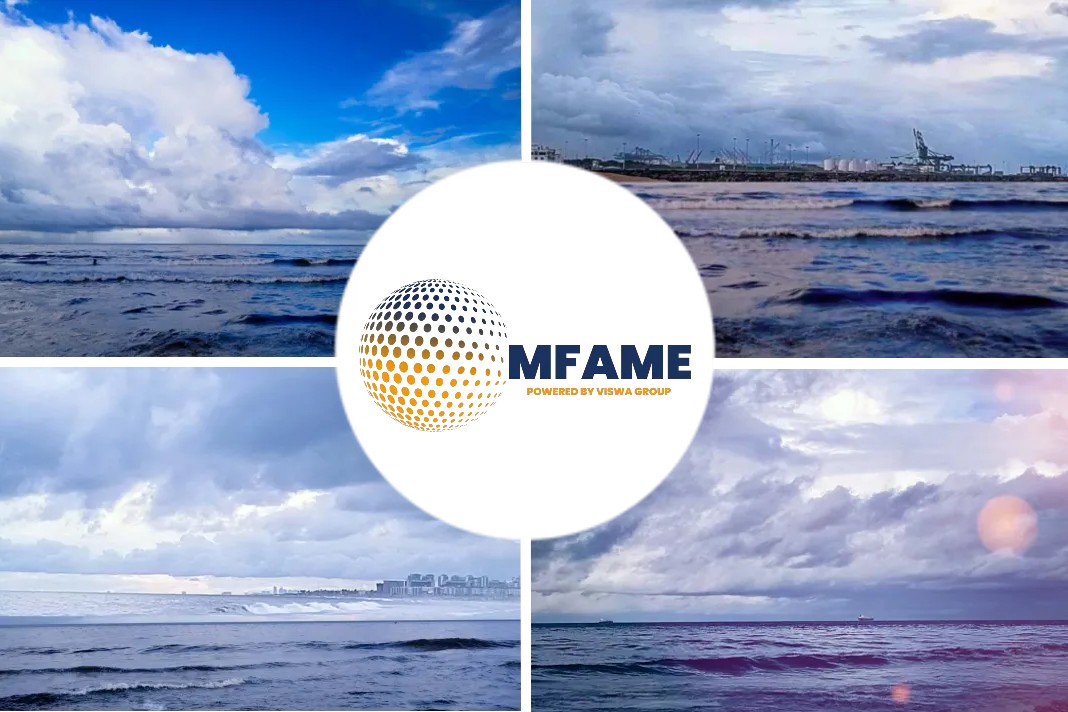New Zealand’s TAIC published its investigation report on the general cargo vessel Kota Bahagia, that experienced a fire in the cargo hold, making the crew to evacuate the ship immediately.
The Incident
During the morning of 18 December 2020, cargo discharge operations were underway on board the Kota Bahagia at Wharf 4, Napier Port. Four people working in number 2 cargo hold discovered a rapidly evolving fire in the cargo hold and evacuated immediately.
With the local fire service in attendance, the fire was suppressed using the on-board carbon dioxide fire-suppression system. The fire was officially declared as extinguished on 24 December 2020.
There were no fatalities or injuries, but there was extensive damage to number 2 cargo hold and high-value project cargo in the hold.
Analysis
#1 Hot work on board
Following the extinction of the fire, number 2 cargo hold and its contents were examined forensically. Burn patterns and damage comparisons provided indicators of the location of the fire’s origin. The most damage was sustained on the ‘tween deck, with mainly heat and smoke damage in the lower hold.
The nacelle that was stowed athwartship32, port side, at the aft end of the ‘tween deck sustained the most damage (see Figures 13 and 14) and it is very likely that the fire originated either underneath this nacelle or between the nacelle and the side of the cargo hold. The presence of clean burn33 on the side of the cargo hold showed that the fire was so hot in this location that the soot deposits were burnt off.
The Transport Accident Investigation Commission (Commission) engaged the services of a specialist fire investigator to complete a report on the origin and cause of the fire. The fire investigator’s conclusion was that the most likely ignition sequence was a hot slag bead from the gas-cutting igniting the sawdust from the dunnage that was used between the cargo and the steel deck, resulting in a smouldering fire.
#2 Safety precautions and the permit-to-work system
The vessel operator had a permit-to-work system in place, which covered high-risk activities that required additional safety assessments and additional safety measures. Hot work is considered high risk as it includes the use of welding, burning or soldering equipment and power tools that generate sparks. It was included in the list of activities that the operator considered to be high risk and there was a section in the Safety and Emergency Manual that provided specific instructions for carrying out hot work safely.
To complete a permit-to-work, one or more checklists must be completed. The checklists used on board the Kota Bahagia contained a series of steps to ensure that a risk assessment was carried out and that safety control measures were in place before hot work was allowed to commence. PIL’s safety management system included the following procedures:
- The Chief Officer or Second Engineer shall conduct safety checks and submit the completed checklist (S-02(1) and S-02(2), as revised) to the Master or Chief Engineer confirming that the work to be carried out satisfies the safety requirement.
- Upon approval, the Master or Chief Engineer signs the application and instruct the Chief Officer or Second Engineer to ensure and monitor the safety requirements.
- While in port, local regulations should be strictly followed, including the seeking of permission from the Port Authorities.
#3 Co-ordinated incident response
Under New Zealand’s Health and Safety at Work Act 2015, an employer must ensure, so far as is reasonably practicable, the health and safety of its workers while at work. The nature of a port environment means that multiple organisations, of which each has its own safety management system, have to work alongside the framework of the port’s health and safety management system. When an emergency situation arises on board a foreign-flagged vessel, the vessel’s own safety management system and its emergency procedures also need to be taken into account.
Fire and Emergency NZ responded to the request for assistance from the master and the port. Responding to maritime incidents is an additional function37 for Fire and Emergency NZ that it performs only to the extent that it has the capability and capacity to do so without compromising its ability to perform its primary functions. Its primary functions 38 include:
- Providing fire prevention, response and suppression services.
- Stabilising and rendering safe incidents that involved hazardous substances.
- Rescuing persons who were trapped as a result of transport accidents or other incidents.
Lessons learned
- A risk assessment for hot work should give particular consideration to the contents of and any constraints in the area where the hot work is to be carried out. The risk assessment should be applied systematically and then monitored to ensure compliance.
- A shipboard fire response is based on the vessel’s design, fire protection systems and crew numbers. Shore-based firefighting assistance and incident management systems should enhance and support the response made by the ship’s crew, not erode it.
Did you subscribe for our daily newsletter?
It’s Free! Click here to Subscribe!
Source: TAIC























It is great to see more and more incidents and accident reports being shared on this platform. These reports will certainly help seafarers to learn and be cautious when encountered with such issues